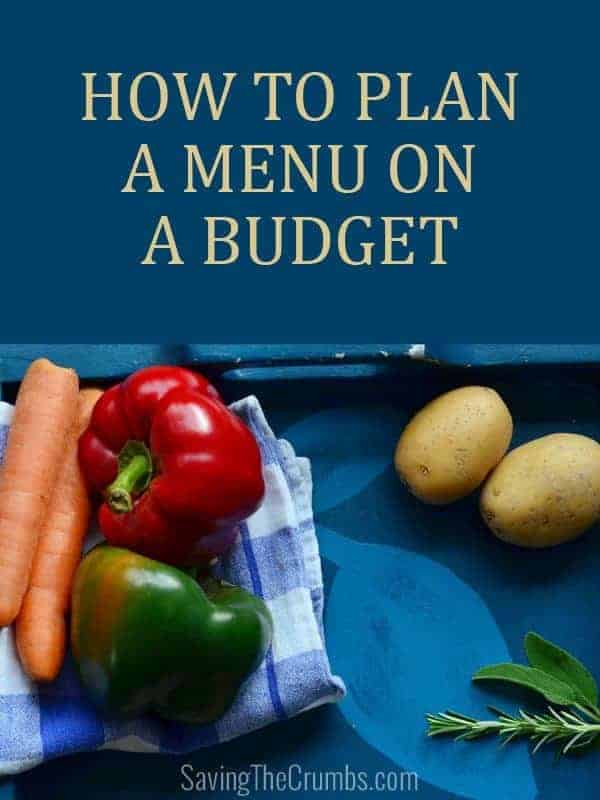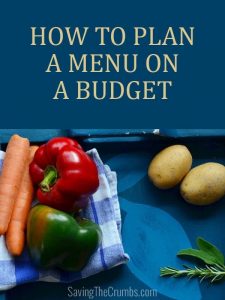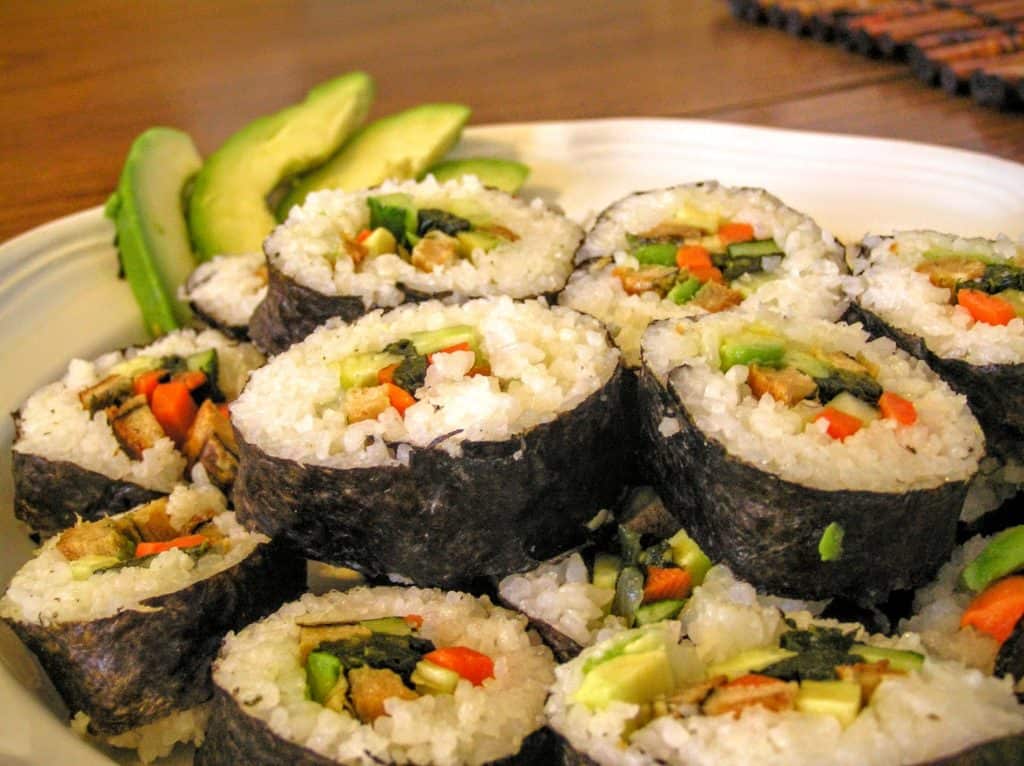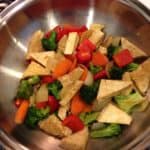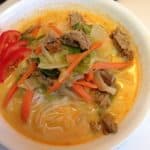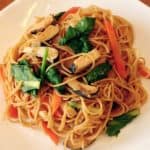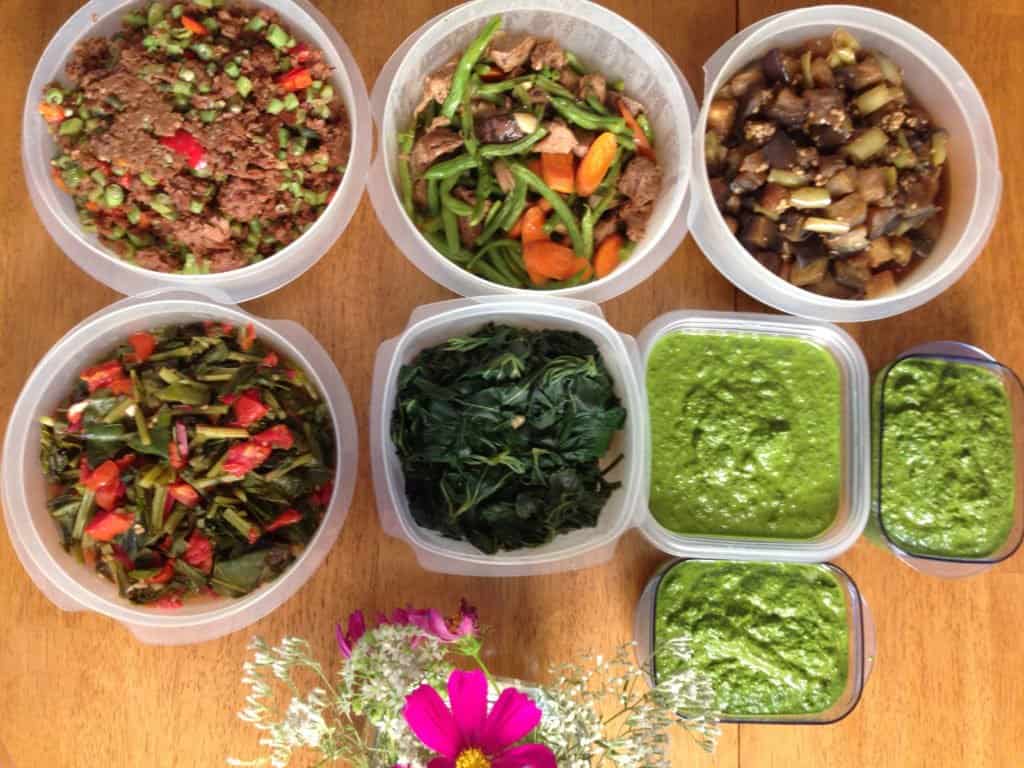So what do meals look like on $60 a month?
First of all, a few tips on how we arrive at our menus.
A New Type of Menu Planning
We don’t really do menu planning in our home. By that I mean we don’t plan our menu based on, “Hmm…what do I FEEL like eating this week?” Some people plan this way:
“I feel like asparagus crepes and strawberry shortcake! I don’t have asparagus or strawberries and it’s the dead of winter so they’ve probably been flown in from Peru and cost a small fortune and taste awful, but hey, that’s what I FEEL like eating, so let’s go shopping!”
In our house, there is much less emotion (although still some, as Al can get a bit emotional over his rice). For us, menu planning is more like an algorithm:
- What do I have in the house that needs to be used up?
- Check fridge, freezer, cupboard
- Use up whatever is already in the house
- If search is futile, move on to #2
- What is currently on sale?
- Check Aldi and price match if necessary
- If it’s something we use often, stock up
- ALERT: Buy what is necessary, not just because it’s on sale!
- If nothing on sale fits your needs, move on to #3
- What is currently in season?
- If you have to buy full price, whatever is in season will be cheaper and better quality
So as you can see, menus do not govern our food spending. What is already available, happens to be on sale, or currently in season determine our menus.
Keep Stocked With the Basics
We always keep certain basic items stocked in our kitchen. These are the constants, and they are usually fairly inexpensive. The fresh produce is the variable that is constantly changing, and it is purchased either on sale or fairly cheap. We pretty much take the same basic “constants” in our kitchen (i.e. potatoes, pasta, carrots, rice) and mix and match them with the changing “variable” (i.e. eggplant, avocado, butternut squash) to put together a menu.
Here are some of the basic items we always make sure we have on hand:
Basic root vegetables
- Potatoes
- Onions
- Carrots
I use these as the foundation for things like curry, soup, and stir-fry. They are also very inexpensive, especially when on sale at Aldi.
Basic frozen vegetables
- Peas
- Corn
- Garden produce
I use these when I don’t have any fresh produce on hand and/or there is nothing on sale. We use corn as a side to pasta and peas in dishes like vegan mac-n-cheese, curry, and certain Asian noodle dishes.
Certain garden produce is a bit more limited in use than fresh produce because it doesn’t do as well in stir-fry and such (tends to be a bit mushy). But I have a few go-to dishes that work great with our frozen peppers, okra, green beans, tomatoes, etc. I love these 3 dishes because I can put my 3 basic root vegetables and then add just about any other vegetable I want. Here they are with some examples of what we put in them:
- Lentil soup (onion, carrot, potato, kale, chard, celery)
- Gumbo/stew (onion carrot, potato, okra, green beans, peppers)
- Curry (onion, carrot, potato, peas, broccoli, cabbage)
Basic pantry items
- Pasta/noodles
- Rice
- Oats
- Cornmeal
- Pinto beans
- Lentils
- Split peas
- Spaghetti sauce
- Coconut milk
These are some of the basic pantry items I always have in stock. Of course, there are lots of other things that we always have like peanut butter, oil, flour, seasonings, etc. But the ones listed are items that form the major building blocks for many of our menus.
Sample Menus
So now that you have an idea of how we come up with our menus, here are a few favorites in the Crumb Saver kitchen (along with some examples of what we might put in them):
- Curry
- Onions, carrots, potato, bell pepper, coconut milk
- Over brown rice (usually along with stir-fry vegetable)
- Stir-fry vegetable with protein
- Kale, green beans, eggplant, tofu/veggie meat
- With brown rice (usually along with curry)
- Asian stir-fry noodles
- Onions, carrots, cabbage, mushroom, tofu
- You can use any type of noodle you wish – Asian wheat or rice noodle, angel hair, or even ramen noodles
- Vietnamese spring rolls
- Rice paper, rice noodles, tofu/veggie meat shreds, lettuce, herbs, Hoisin sauce
- Great for summer – we use raw greens from the garden, requires minimal cooking, and is super healthy
- Noodle soup
- Various types of Asian noodle
- Any vegetable
- Our current favorite style is tomato “beef” (tomato cooked into the broth adds SO much flavor!)
- Sushi
- Seaweed, rice, carrots, cucumber, avocado, spinach, tofu
- A make-your-own sushi bar is super fun!
- Soup and sandwiches/cornbread
- Lentil and split pea soup are our current favorites (they were also on sale at Aldi so we stocked up)
- Another good accompaniment to soup is oven fries or sweet potato fries (especially if you grew them yourself in the garden!)
- Gumbo/stew
- Onions, carrots, potatoes, tomatoes, okra, peppers, green beans
- Serve over brown rice
- Vegan mac-n-cheese
- Butternut squash “cheese” with peas, spinach, or kale
- Stir-fried or roasted cabbage on the side
- Vegan Alfredo
- Check out our recipe here
- Haystacks/burritos
- Sometimes we just skip the chips/tortillas and pile all the fillings over rice (hey, we’re Asian!)
- Pesto/spaghetti
- We have enough frozen pesto from our garden 2 years ago to last us another 5 years!
- Vegetable side – frozen corn, steamed kale, raw peppers from the garden
- Bread and margarine
Note: Usually I cook large quantities of 2 different menus and we go back and forth eating them every other day until they’re gone which typically takes about a week.
Recipes? What Recipes?
So naturally, the next question we receive is, “Where are the recipes???” Since our menus are governed by what is available, subsequently our recipes are too. So while I do use recipes for some dishes, they end up being pretty much a rough starting point from which to make constantly changing substitutions and variations. (In addition, we cook a lot of Asian food which instead of being based on recipes, is based more on technique/principles.)
That being said, we do hope to share more of the tried and true, super basic, super adaptable, and super budget-friendly recipes that we use as we are able. So stay tuned!
How do you plan your weekly meals and what are some of your favorite go-to dishes?

